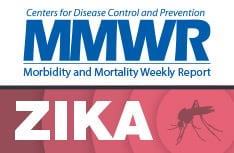Microcephaly & Other Birth Defects
Zika and Microcephaly

Microcephaly is a birth defect in which a baby’s head is smaller than expected when compared to babies of the same sex and age. Babies with microcephaly often have smaller brains that might not have developed properly.
Zika virus infection during pregnancy is a cause of microcephaly. During pregnancy, a baby’s head grows because the baby’s brain grows. Microcephaly can occur because a baby’s brain has not developed properly during pregnancy or has stopped growing after birth.
Congenital Zika Syndrome
Congenital Zika syndrome is a unique pattern of birth defects and disabilities found among fetuses and babies infected with Zika virus during pregnancy. Although many of the features seen as part of congenital Zika syndrome can be caused by other infections during pregnancy, there is often a pattern of the features below that has been termed congenital Zika syndrome:
- Severe microcephaly where the skull has partially collapsed
- Decreased brain tissue with a specific pattern of brain damage
- Damage (i.e., scarring, pigment changes) to the back of the eye
- Joints with limited range of motion, such as clubfoot
- Too much muscle tone restricting body movement soon after birth
Babies who were infected with Zika before birth may have damage to their eyes and/or the part of their brain that is responsible for vision, which may affect their visual development. Both babies with and without microcephaly can have eye problems. If your baby was born with congenital Zika infection, he or she should receive the recommended screenings and tests to check for eye and other health problems, even if your baby appears healthy.
A recent study in Brazil found that at 19-24 months, babies with congenital Zika virus infection exhibited challenges with sitting independently, feeding, and sleeping. The babies also experienced seizures and hearing and vision problems, such as not responding to the sound of a rattle and not being able to follow a moving object with their eyes. It is important to note that babies affected by Zika virus will continue to require specialized care from many types of healthcare providers and caregivers as they age.
Not all babies born with congenital Zika infection will have all of these problems. Some infants with congenital Zika virus infection who do not have microcephaly at birth may later experience slowed head growth and develop postnatal microcephaly.
Recognizing that Zika is a cause of certain birth defects does not mean that every pregnant woman infected with Zika will have a baby with a birth defect. It means that infection with Zika during pregnancy increases the chances for these problems. Scientists continue to study how Zika virus affects mothers and their children to better understand the full range of potential health problems that Zika virus infection during pregnancy may cause.
Future Pregnancies
Based on the available evidence, we think that Zika virus infection in a woman who is not pregnant would not pose a risk for birth defects in future pregnancies after the virus has cleared from her blood. From what we know about similar infections, once a person has been infected with Zika virus, he or she is likely to be protected from a future Zika infection.


